
|
Micro-Therapy: Free Association by Richard L. Howey, Wyoming, USA |
A few years ago, I acquired a used Zeiss polarizing microscope in pristine condition with a number of accessories. Naturally, I have used it to explore making crystal slides from a variety of substances, everything from Ascorbic acid to the antihistamine Vistaril. So, I have accumulated a considerable number of images, some of which are quite vivid, and I am going to share them with you in the form of a gallery, but with irrelevant and irreverent comments or what I described in the title as free association. It’s an entertaining undertaking and you might want to come up with some associations of your own if you don’t like mine.
First let me show you a few pictures of the microscope itself and one especially marvelous accessory.

This shows the Zeiss with a Nikon Coolpix 995 attached which is what I use for all of my photomicrography.
Here is a side view and you can see the rotary stage which is extremely handy.
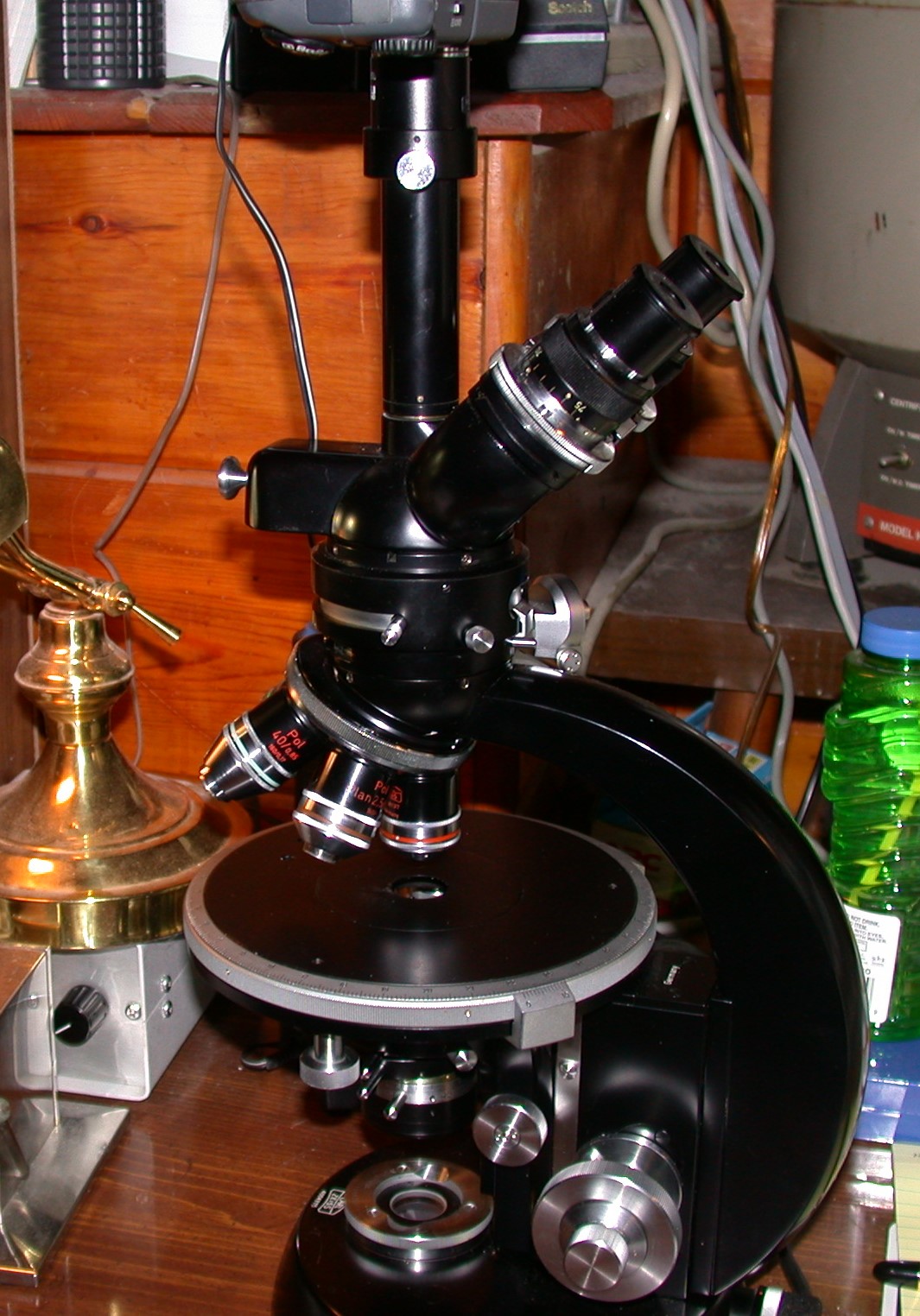
And from the other side.

This is a picture of the quartz rotary compensator which is an extraordinary device and as I’ll show you later, just a slight rotation and produce and significantly new result.
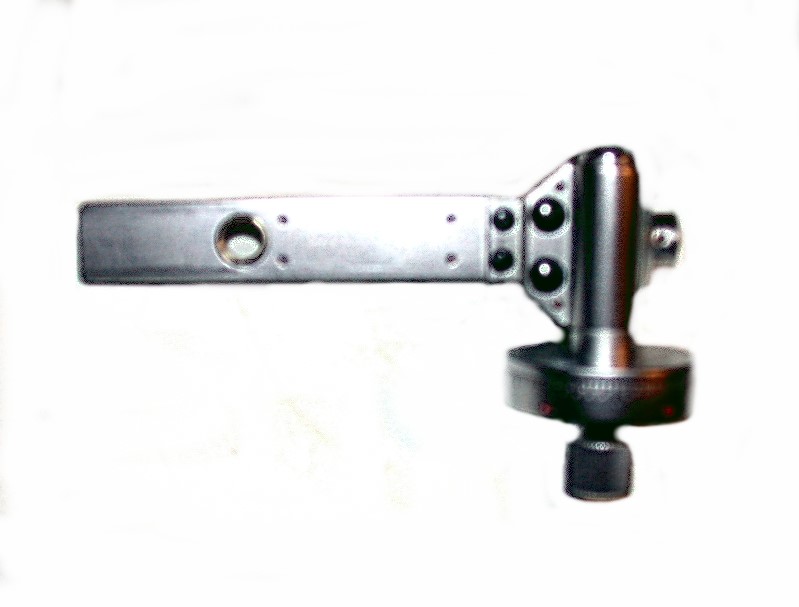
It also came with 4 other compensators.
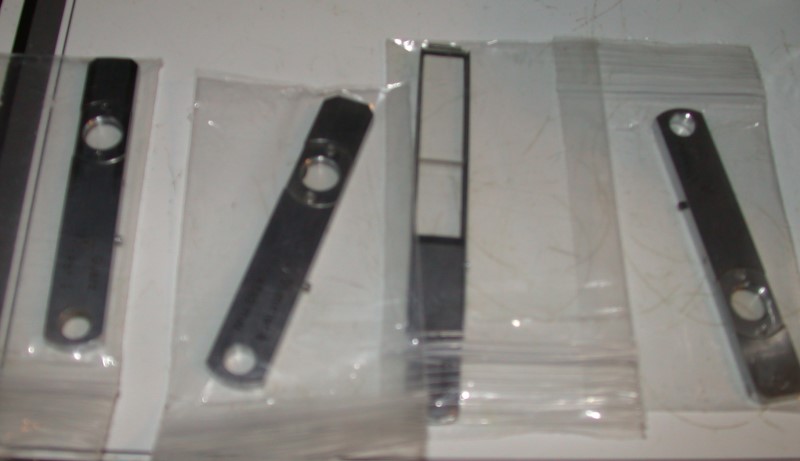
And, finally, here is a view with the rotary compensator in position.
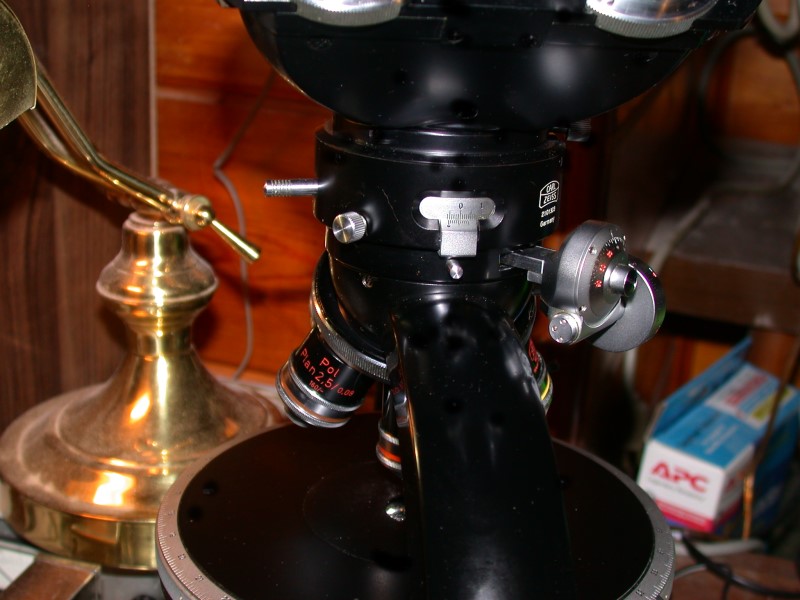
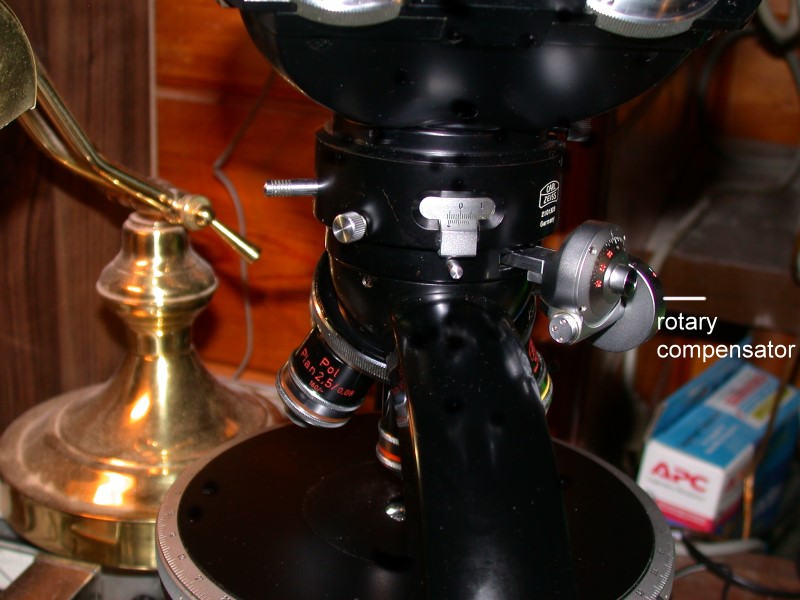
Next comes a series of crystal images and the opportunity to be silly and I invite you play along. However, for you pedantic sorts who like to know what you’re “really” look at, I have included a description of the ingredients under each image.
First off, an aerial photography of an ancient pyramid complex in the Yucatan jungle.
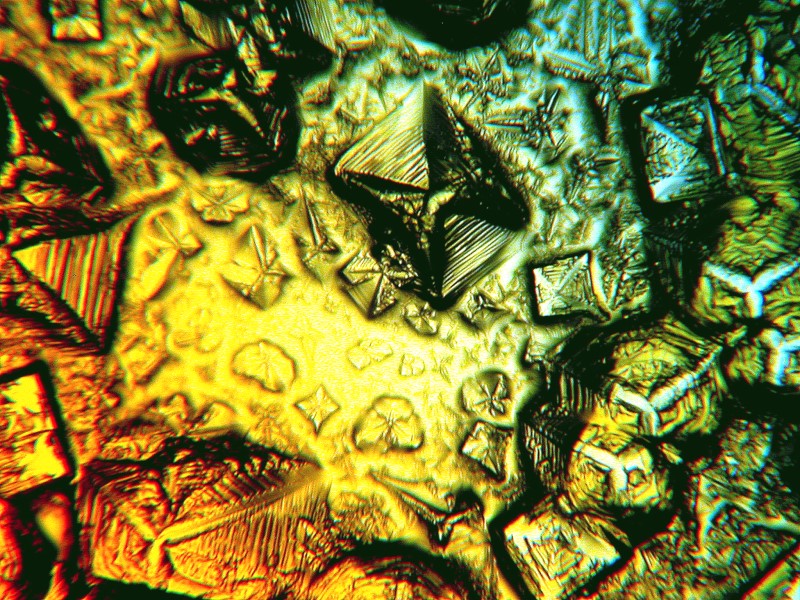
A mixture of Ascorbic acid and tincture of Iodine.
A closeup showing that some of the pyramids are domed and possess a 3-fold symmetry.
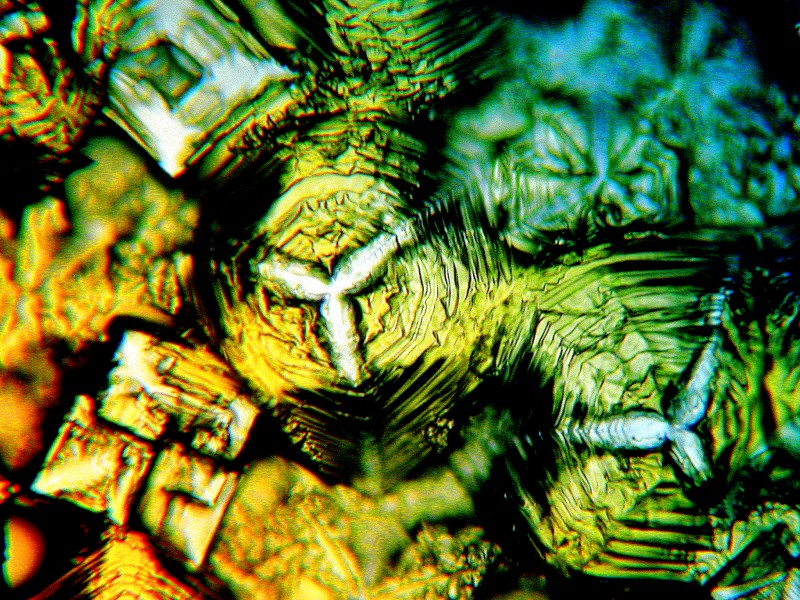
A mixture of Ascorbic acid and tincture of Iodine.
Next, we have a collection of barbed needlefish.
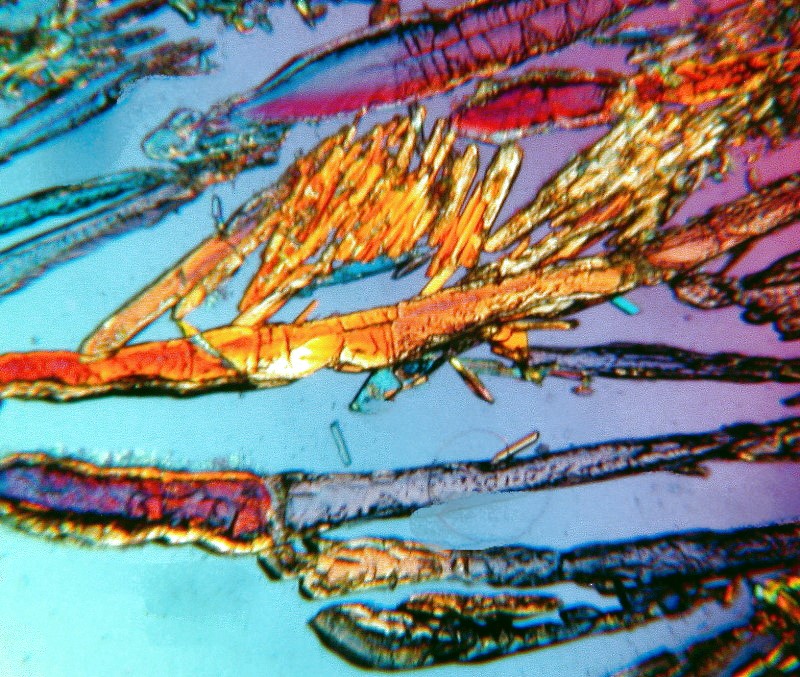
Orange G.
A collection of graptolites long thought extinct.
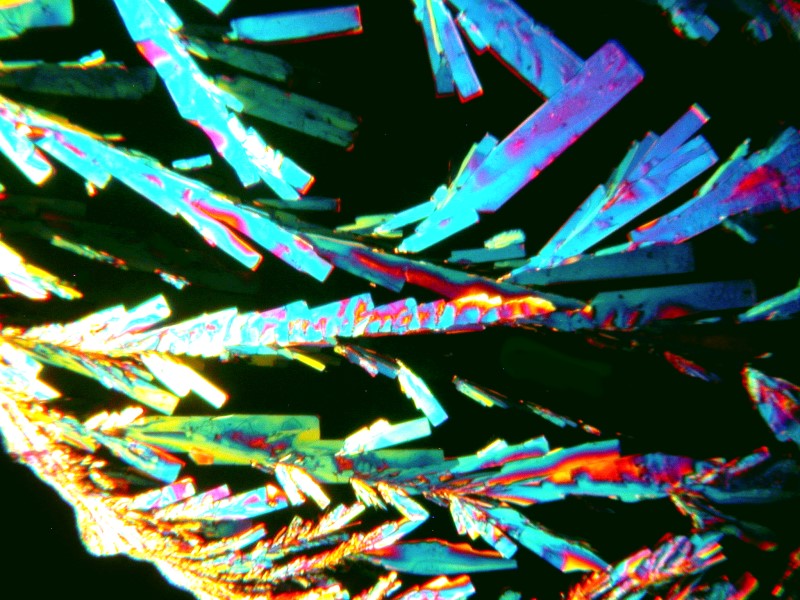
Ascorbic acid.
A “gate” on a chip from a quantum computer.
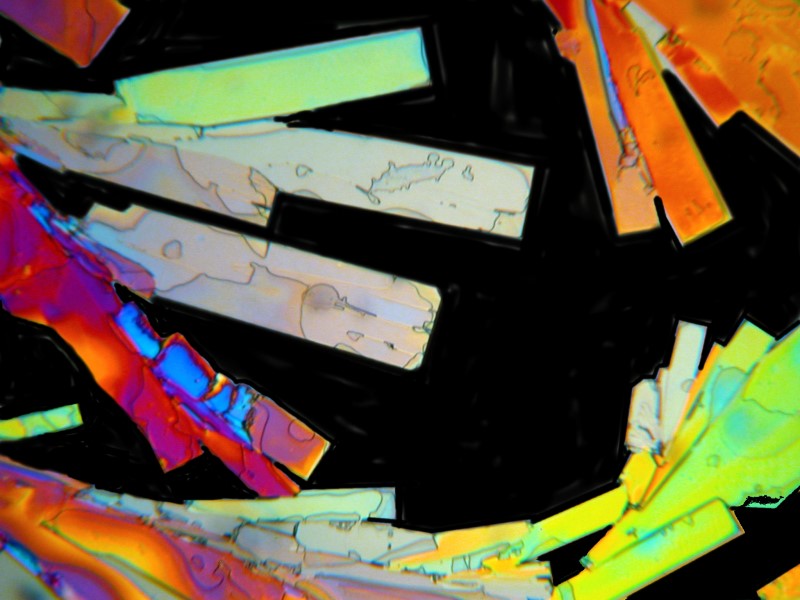
Ascorbic acid.
Another view of the quantum gate.
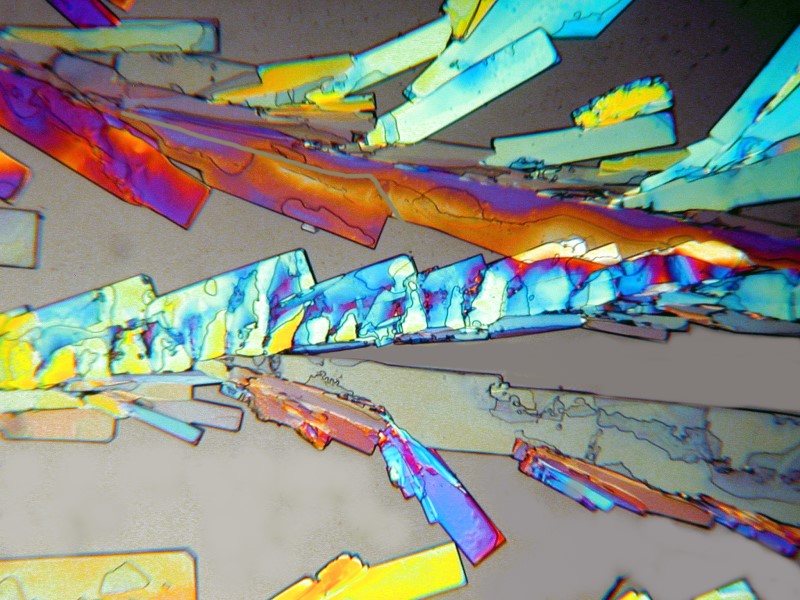
Ascorbic acid.
Plankton from the Red Sea.
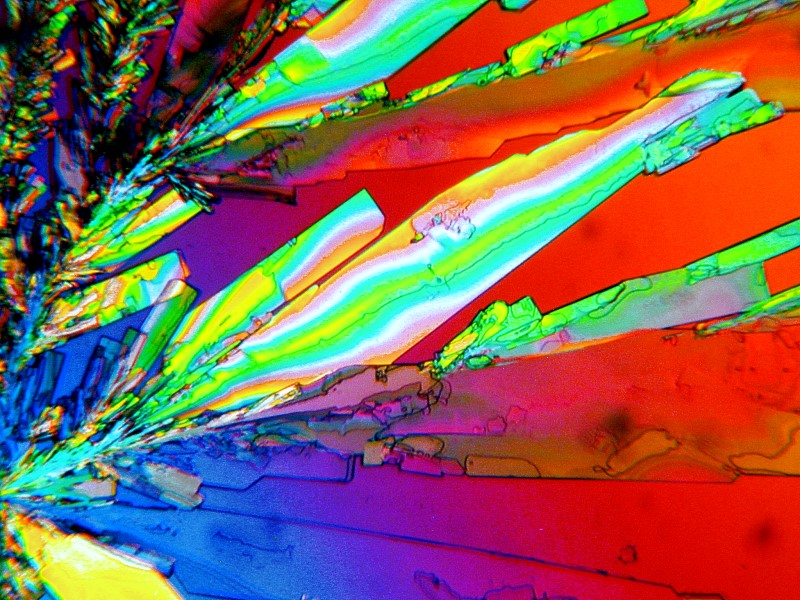
Ascorbic acid.
A fossil Martian foraminiferan.
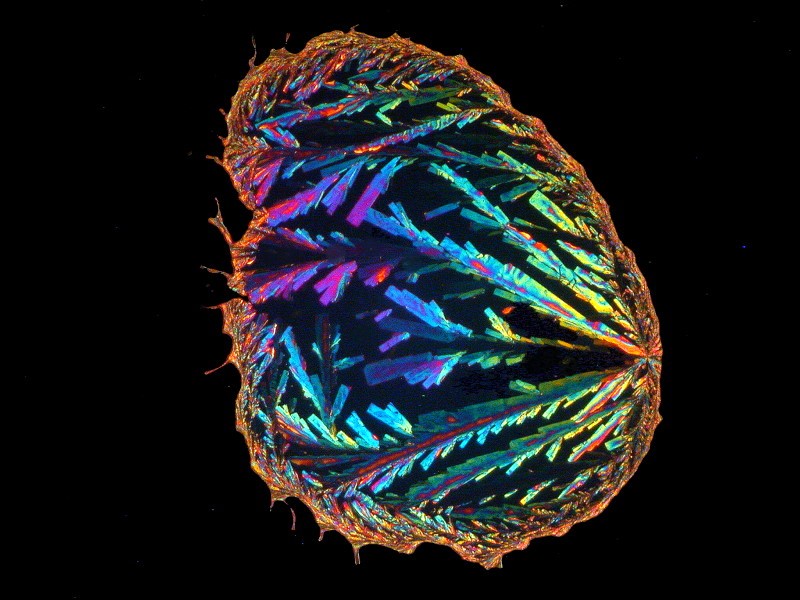
Ascorbic acid.
A fossil Martian mollusk.
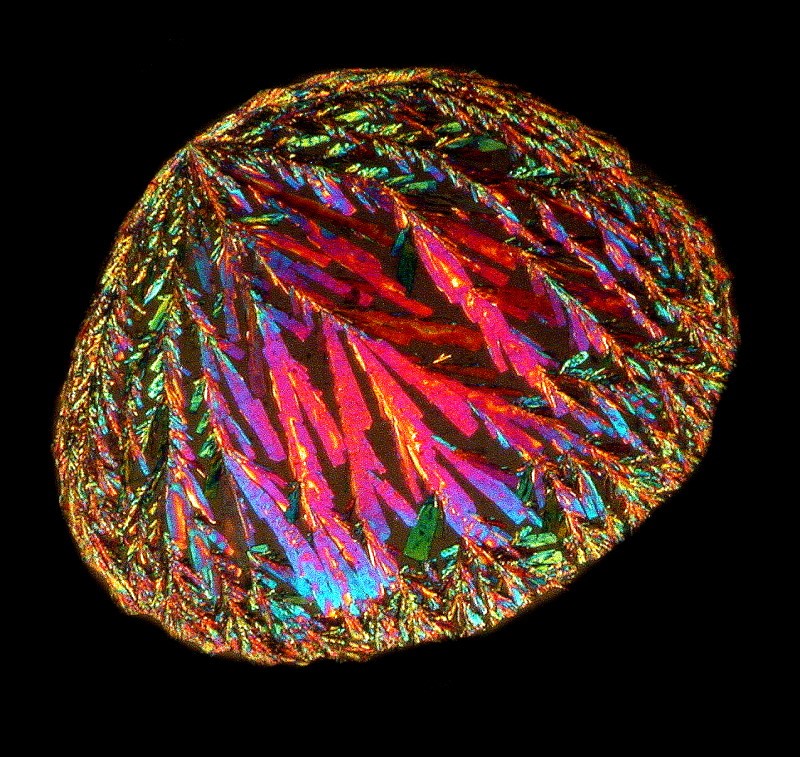
Ascorbic acid.
[These last 6 images were all Ascorbic acid and furthermore were taken from the same slide. I am often astonished by the variation that a single substance can produce in terms of crystal formation.]
Micro-BitCoins.
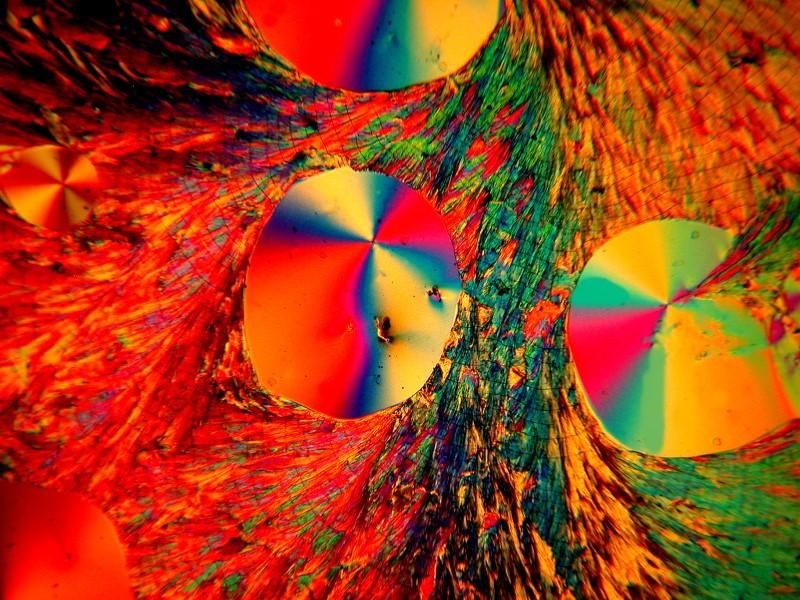
Ascorbic acid.
A Neptunian space vulture.
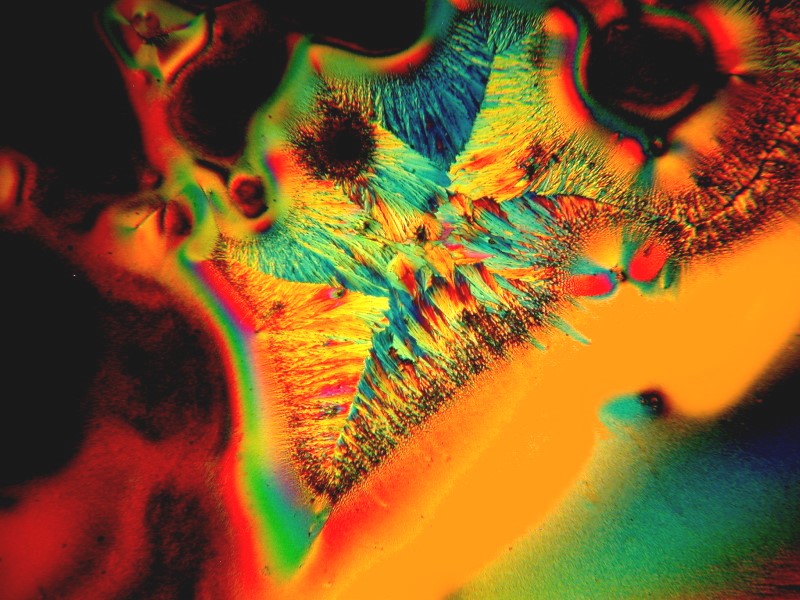
Ascorbic acid, Mercurochrome, Metformin.
The head of a tropical Venusian falcon.
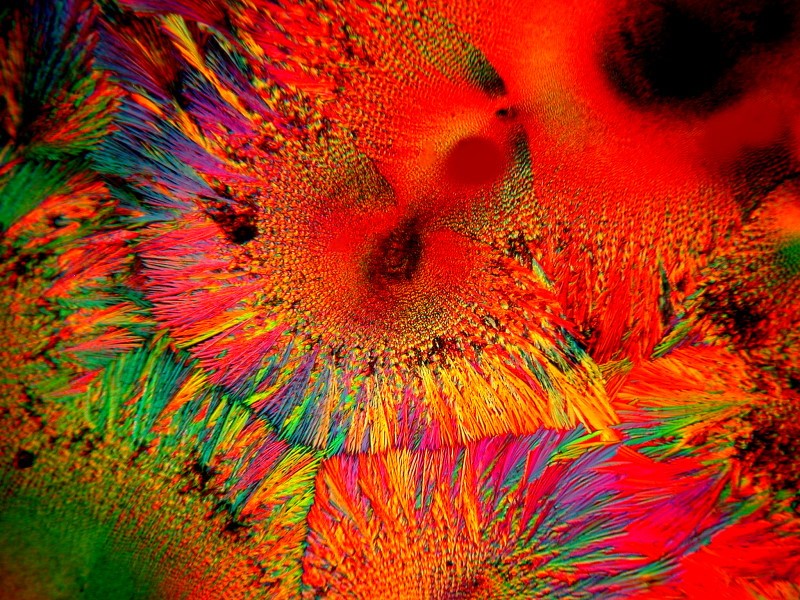
Ascorbic acid, Mercurochrome, Metformin.
Sperm cell of a macaw penetrating an ovum.
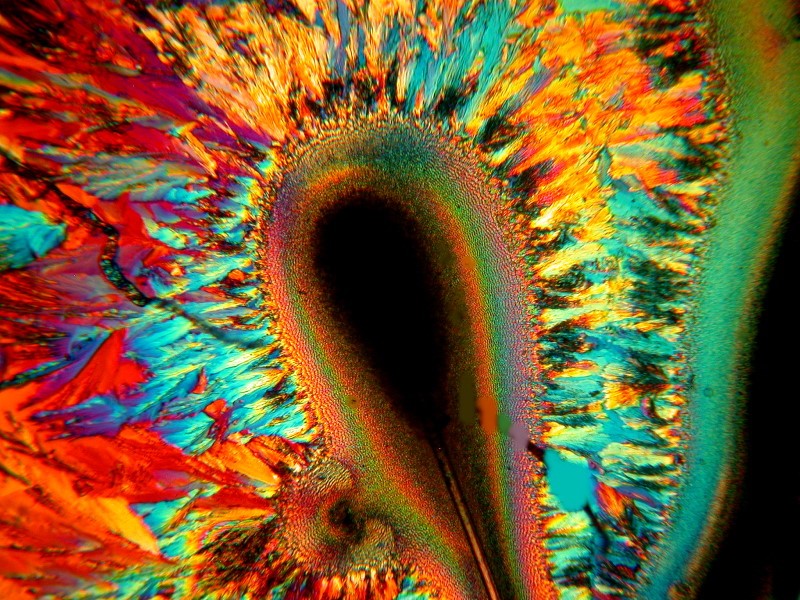
Ascorbic acid, Metformin, Methylene Blue.
A super nova in the Andromedean galaxy.
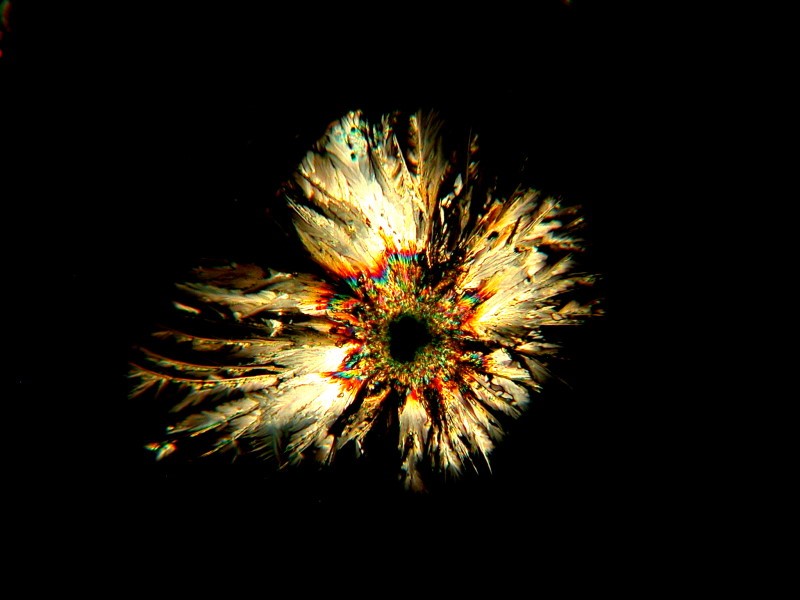
Ascorbic acid, Metformin, Methylene Blue.
Tail feather from a Uranian cockatoo.
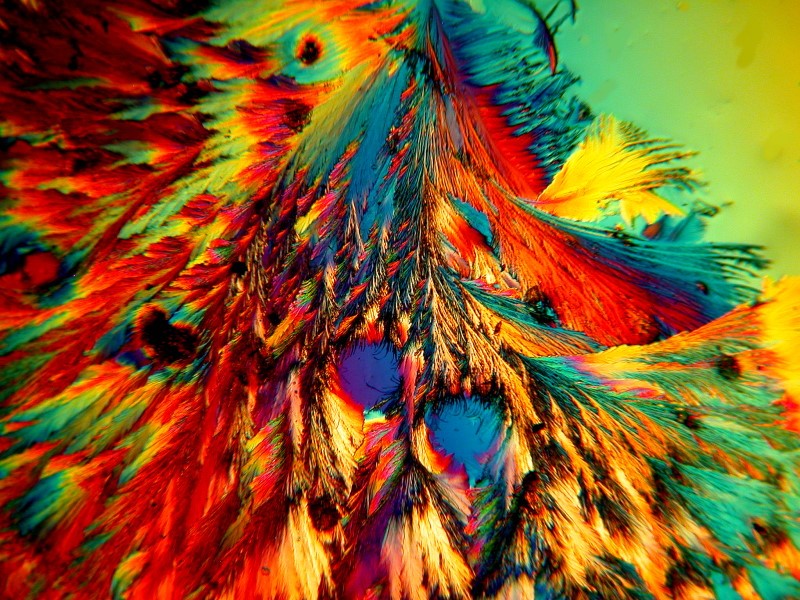
Ascorbic acid, Metformin, Vanillin.
The neural net of a tardigrade.
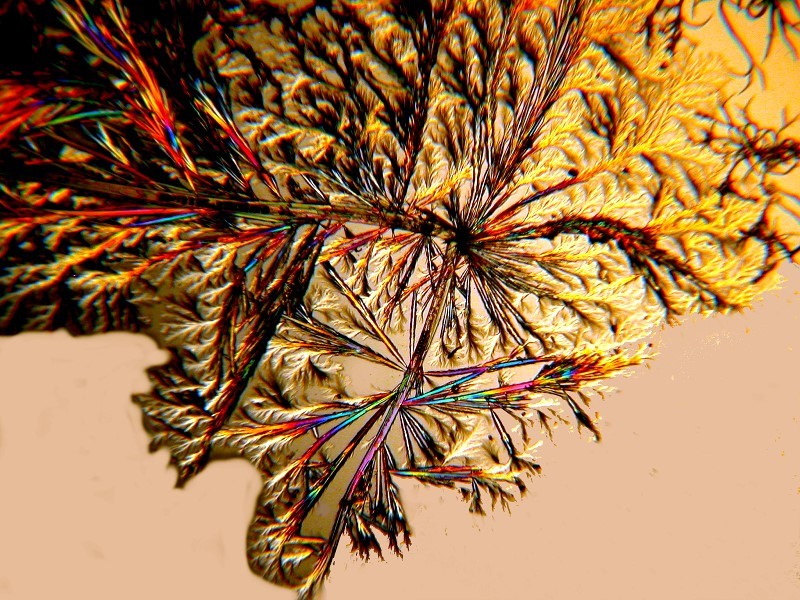
Ascorbic acid, Sanafitil.
An aerial, thermal map of the Sulu Sea near Borneo.
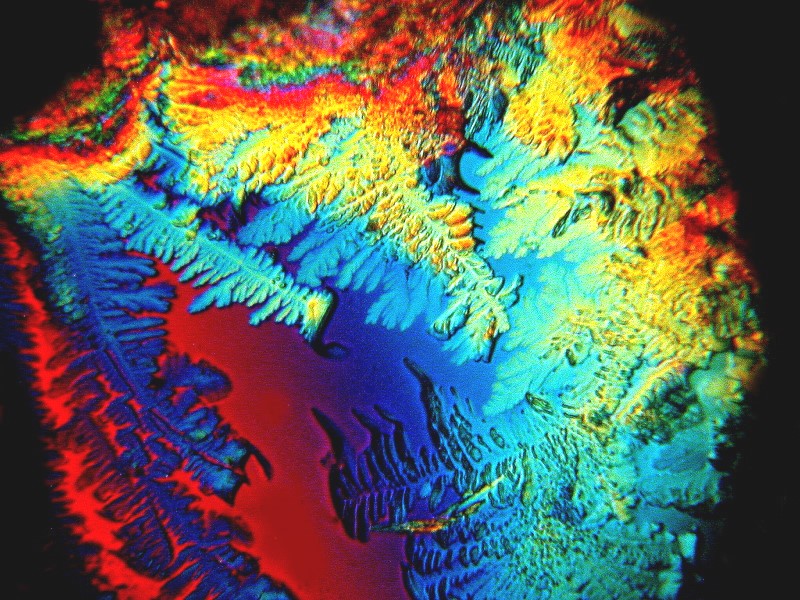
Ascorbic acid, Stevia, Fluoxetine, Neutral Red.
Sunspots photographed using diamond filters.
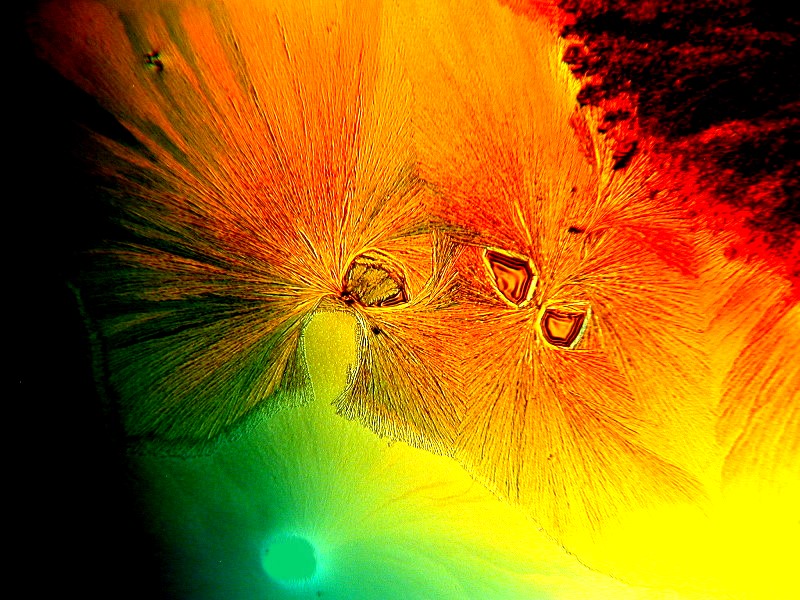
Ferric Ammonium Sulfate, Ascorbic acid.
An Orc with his pet shoebill bird.
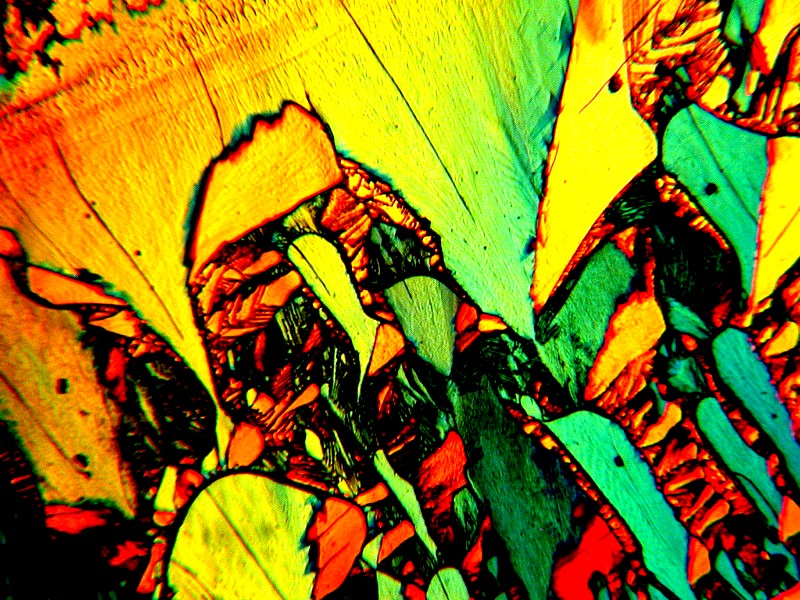
Magnesium sulfate, Urea.
An uncle of the Orc above.
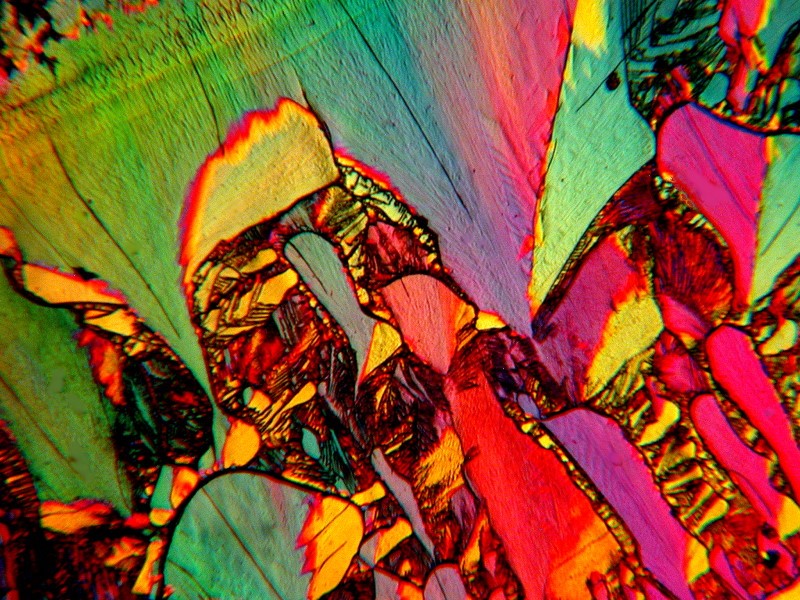
Magnesium sulfate, Urea.
A cousin of the Orc above.
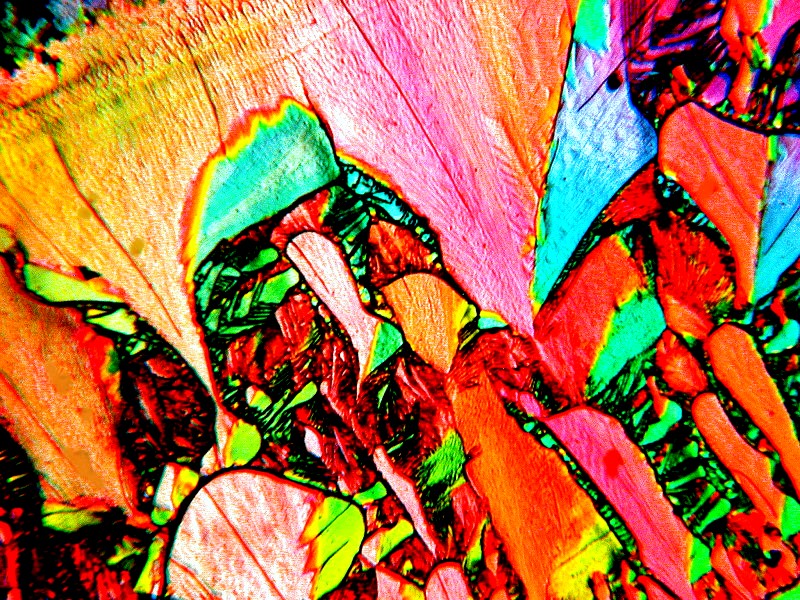
Magnesium sulfate, Urea.
A closeup of a section of Hieronymus Bosch’s Garden of Earthly Delights.
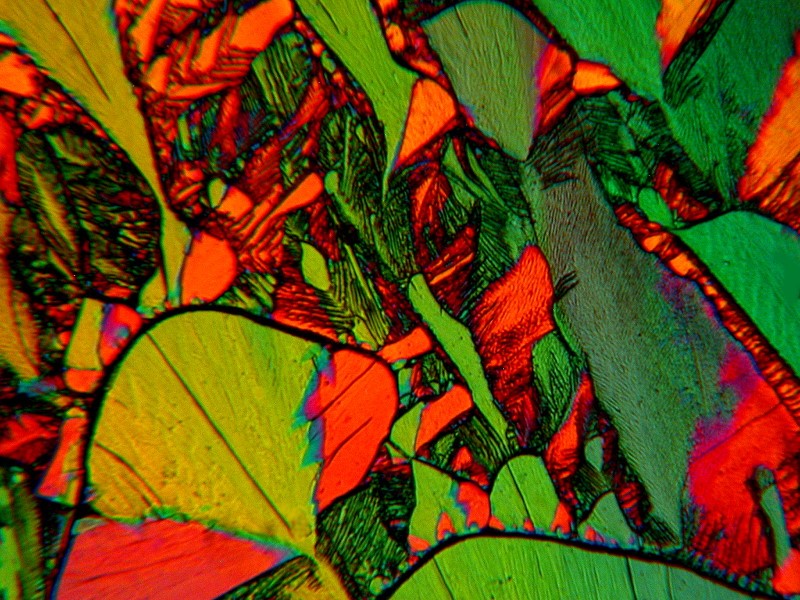
Magnesium sulfate, Urea.
A section of a wing of a butterfly on steroids.
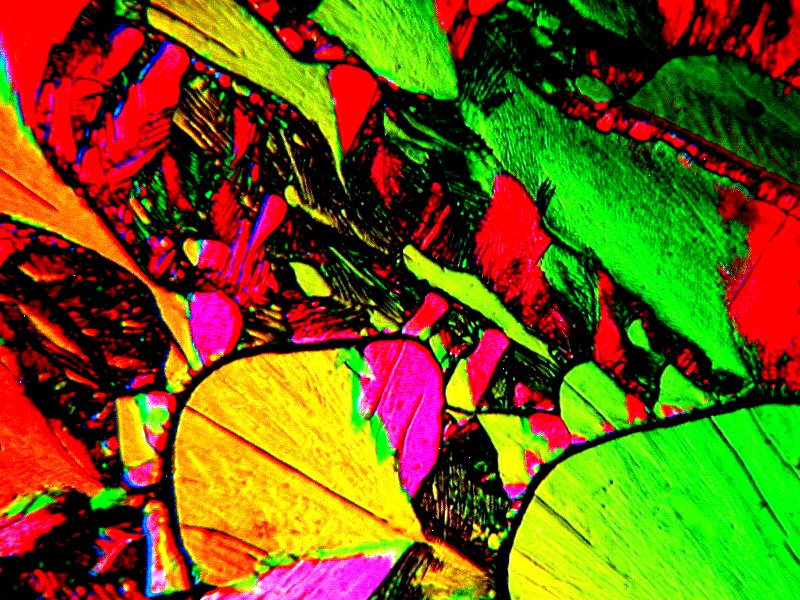
Magnesium sulfate, Urea.
From time to time I have experimented with adding bits of calcareous material to a drop of chemical solution especially one which is acidic. The next 2 images are examples.
Waves breaking in a Japanese painting.
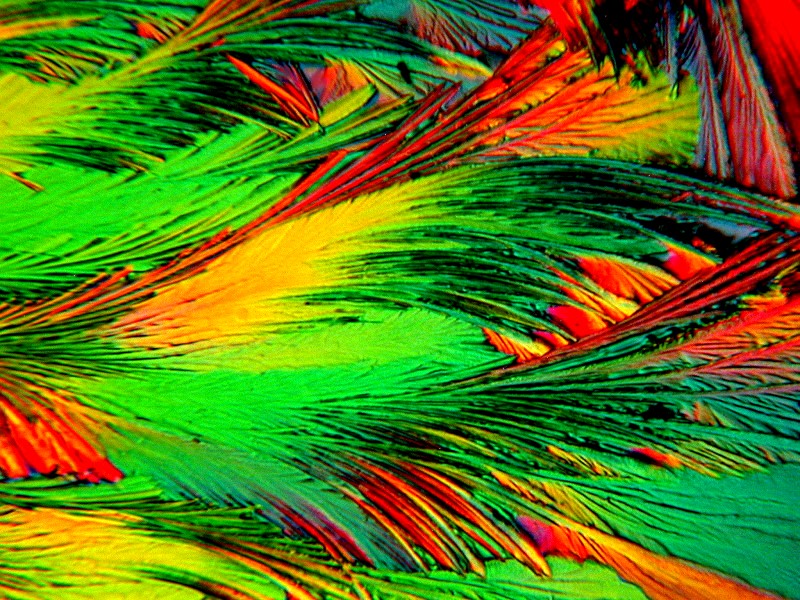
A tiny fragment of a sea urchin test, Ascorbic acid.
A thermal photograph of swirling gas clouds over a volcano.
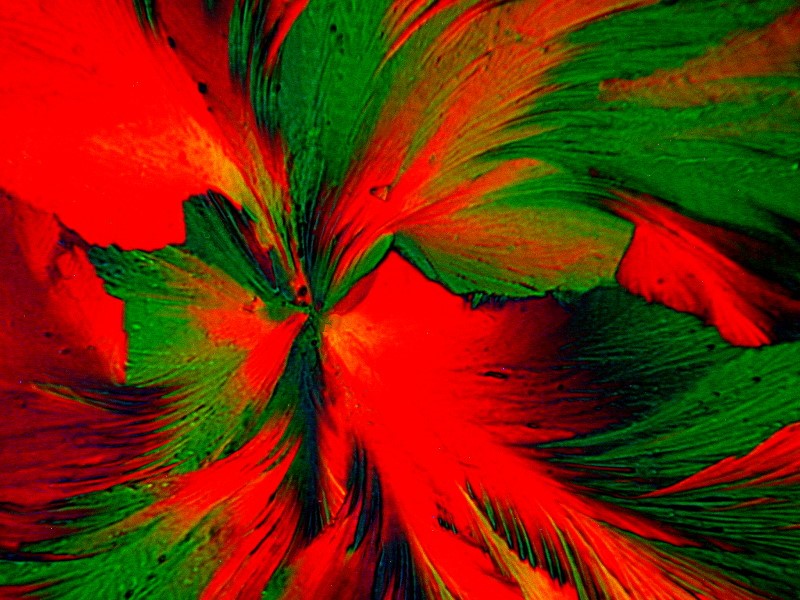
A tiny fragment of a sea urchin test, Ascorbic acid.
A brain cell stained with fluorescent dyes.
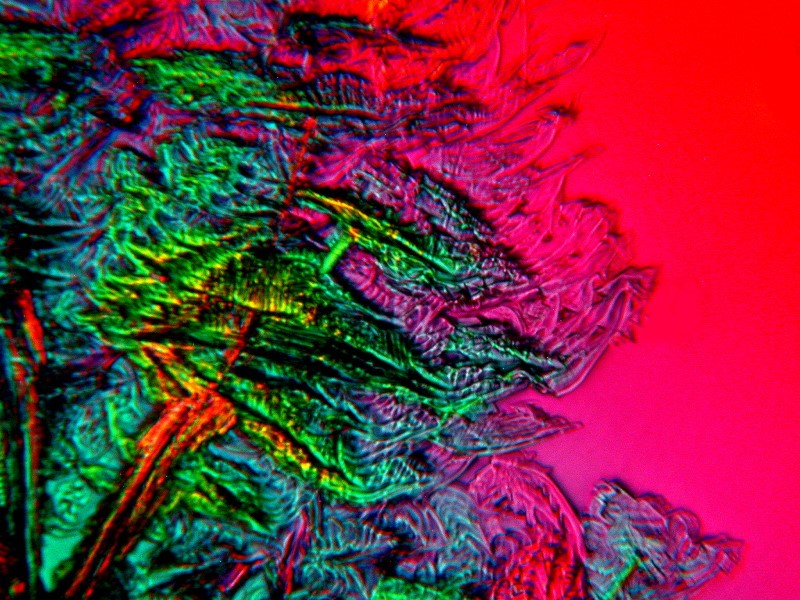
Borax, Ascorbic acid.
Cross section of a chocolate and toffee candy bar.
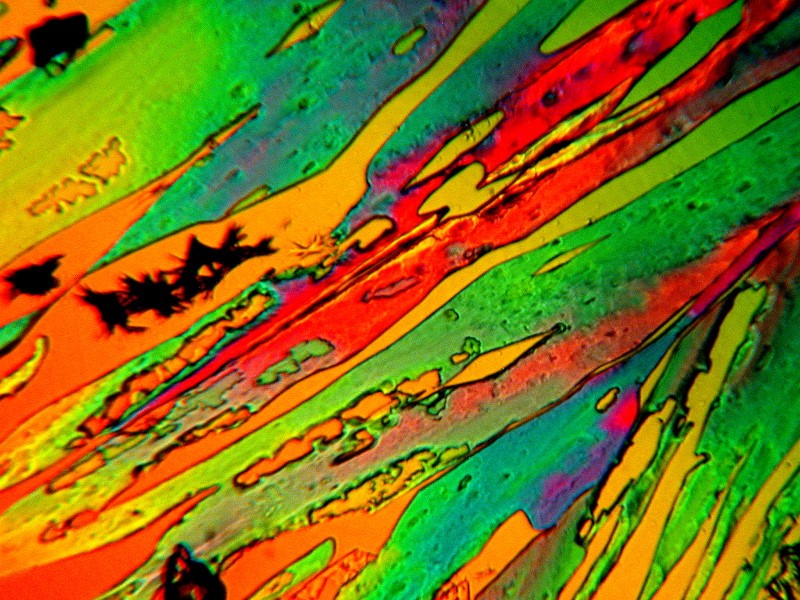
Borax, Urea.
An aerial view of a water park.
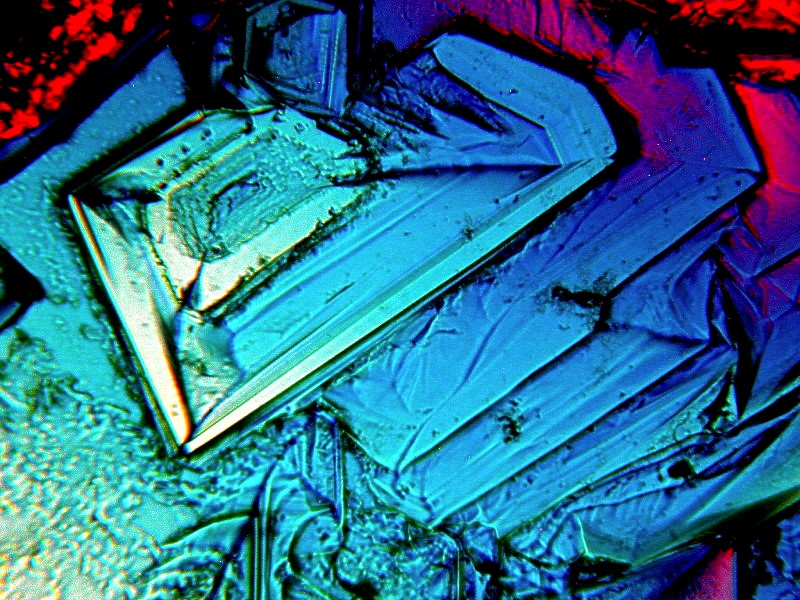
Ferric Ammonium Sulfate.
Arterial network in a human liver.
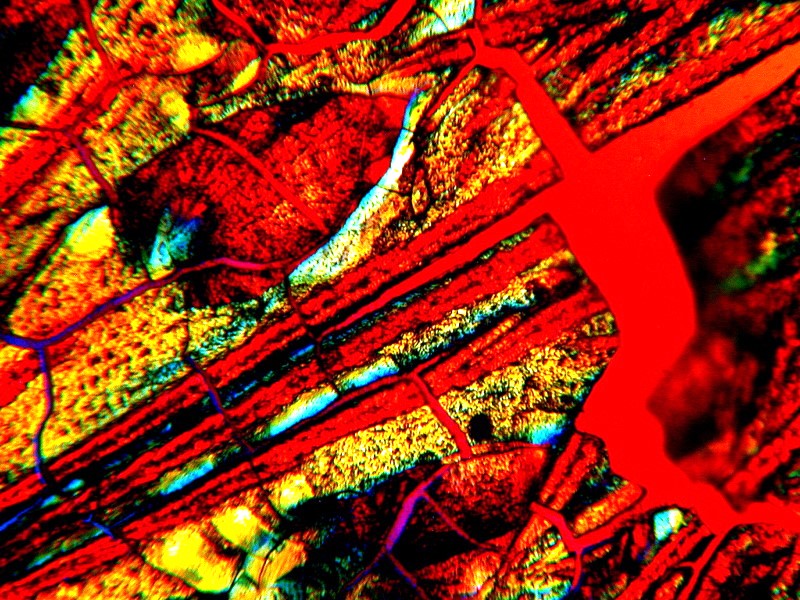
Sal Soda, Sodium Silicate.
A small section of a stained glass window in the Sacre Coeur.
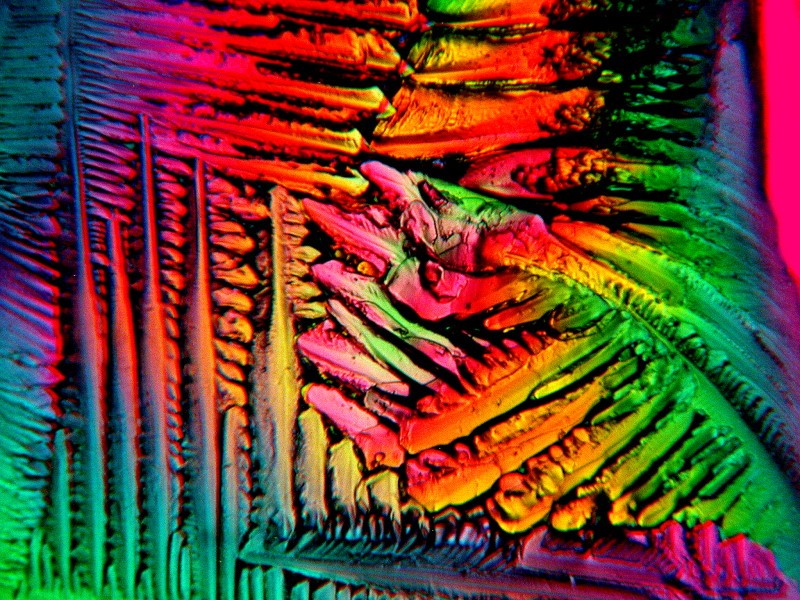
Vistaril, Nickel Sulfate.
The edge of a ophthalmological micro-scalpel.
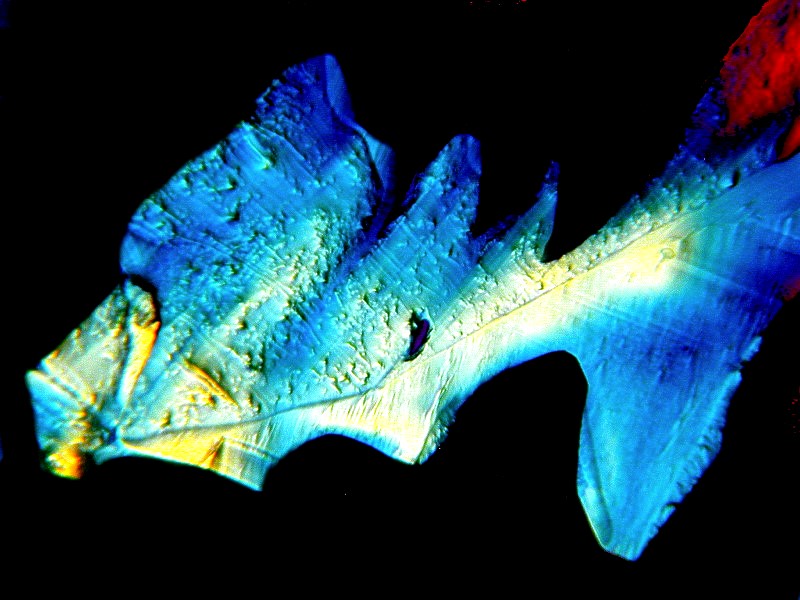
Anbesol, Boric Acid, Stevia.
Lipids in a drop of blood.
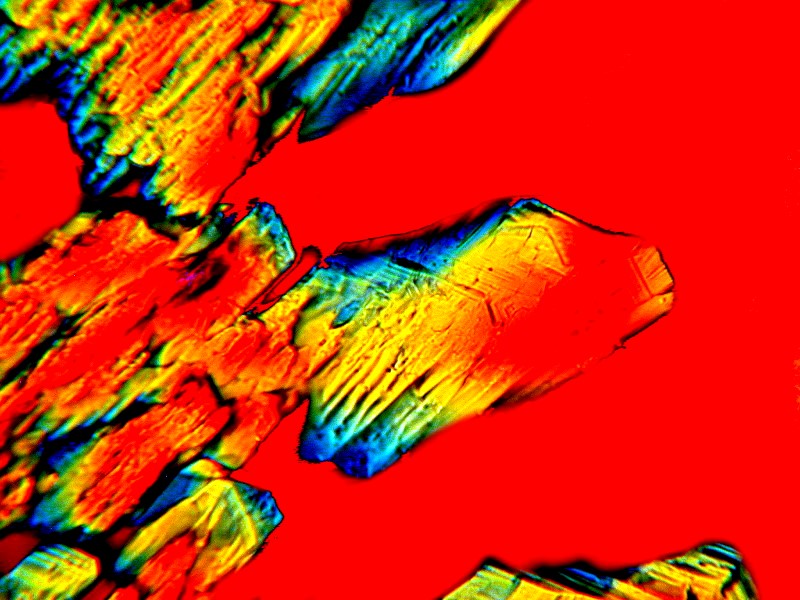
Anbesol, Boric Acid, Stevia.
Aerial view of rice terraces on a Chinese island.
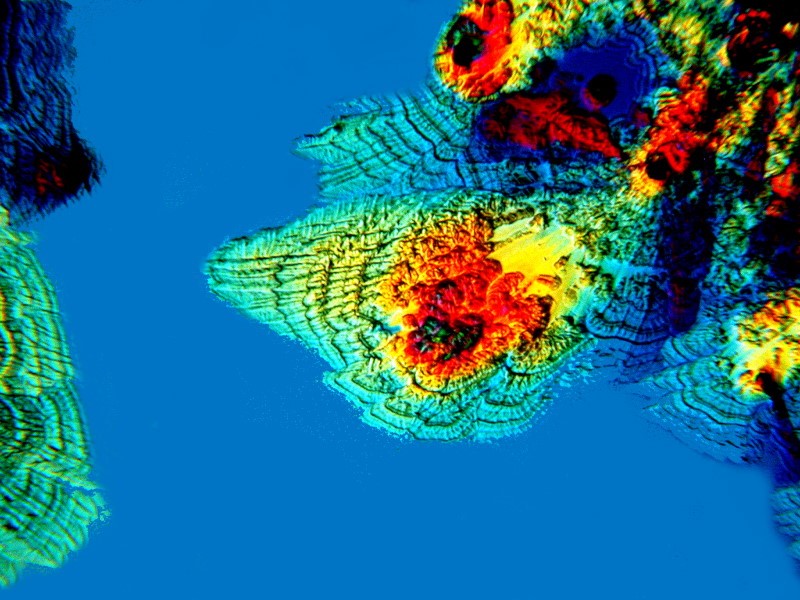
Ibuprofen, Ascorbic acid, Mercurochrome.
Coral polyps from the Great Barrier reef feeding.
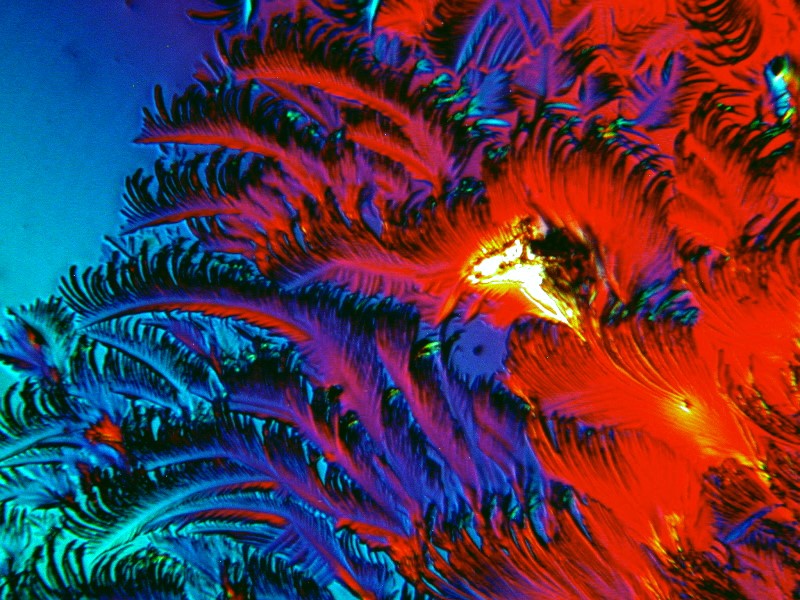
Immodium, Ascorbic acid.
The next 4 images show the remarkable character of the quartz rotary compensator. The same area of the slide is in all 4 images; the only difference is a very slight turn of the compensator.
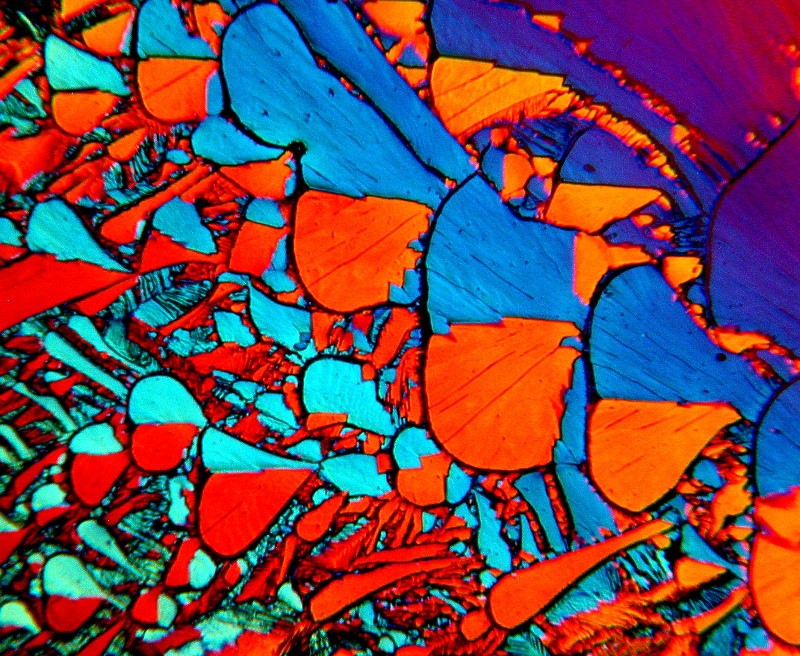
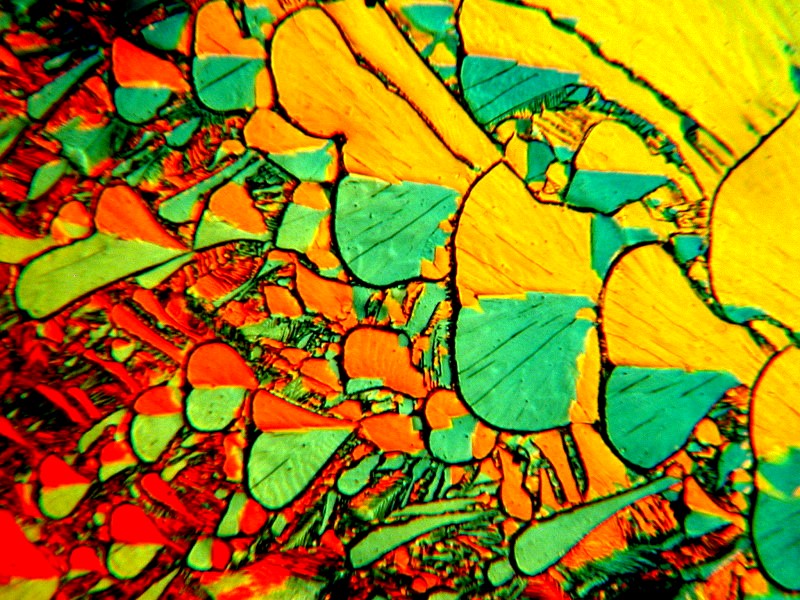
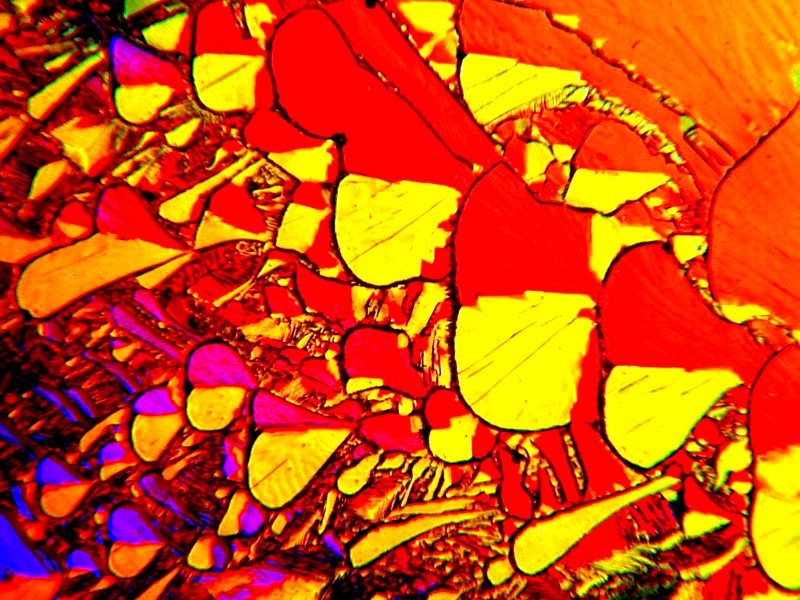
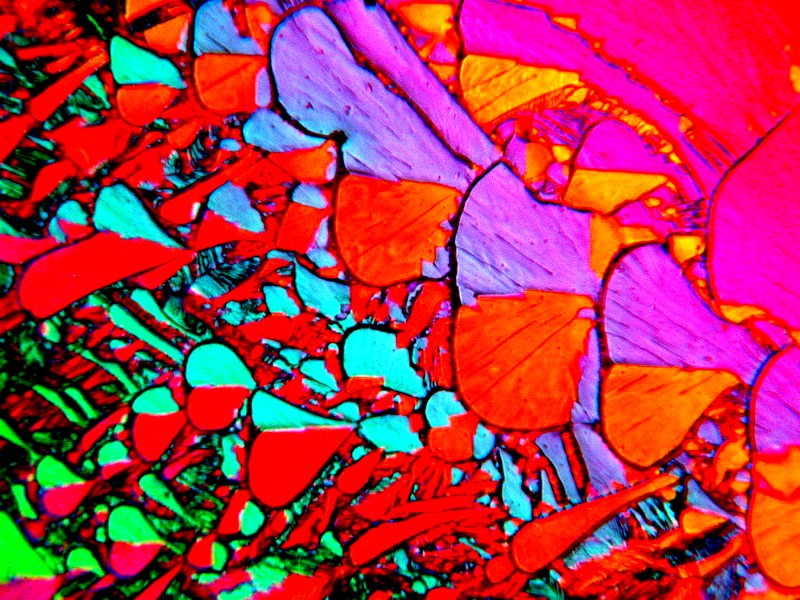
These are all a mixture of Nickel Sulfate and Urea.
The next four images are the same mixture, in fact, they are all on the very same slide which shows the potential for extraordinary variability in the ways in which certain mixtures can crystallize.
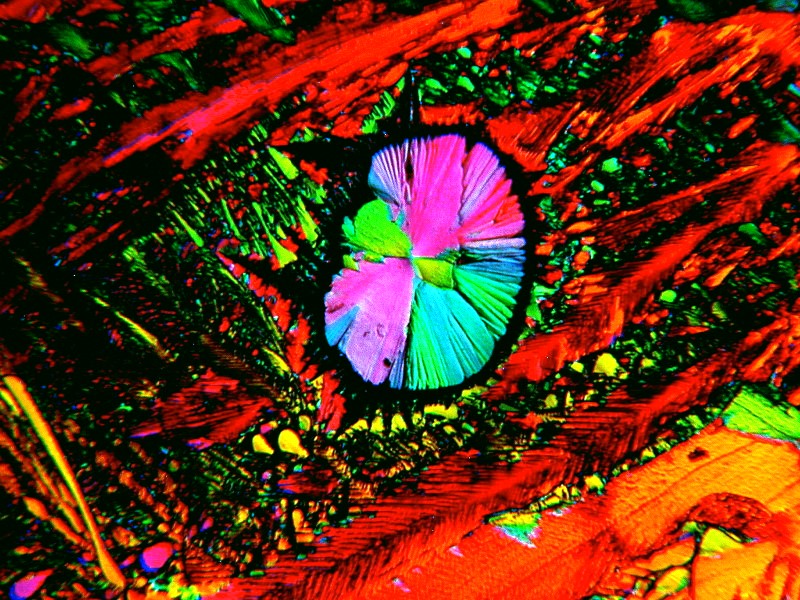
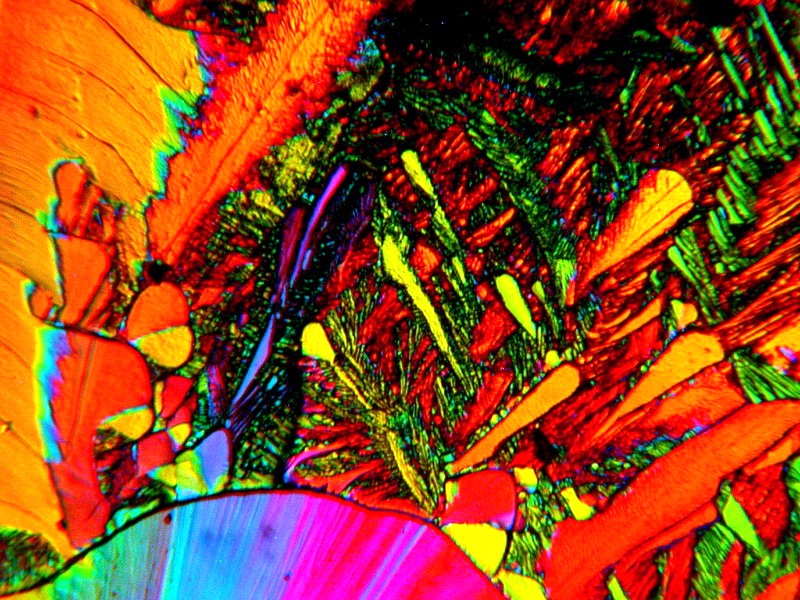
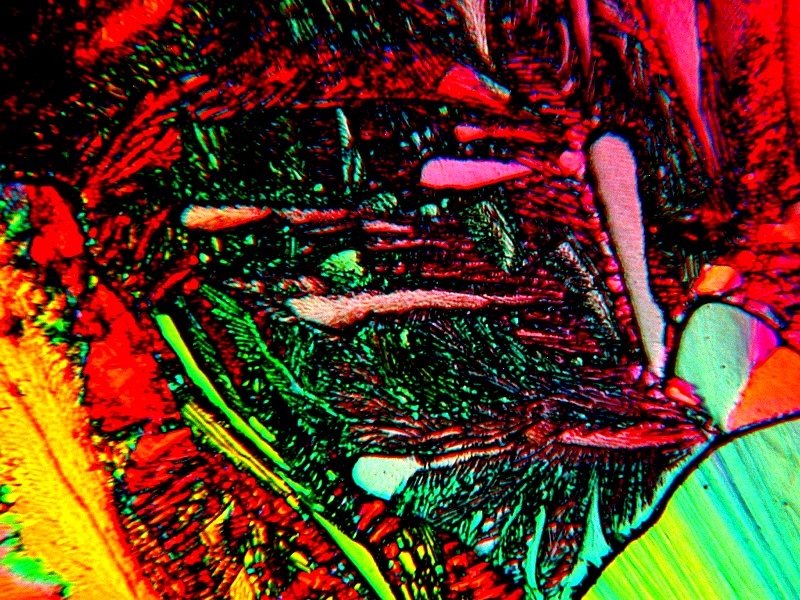
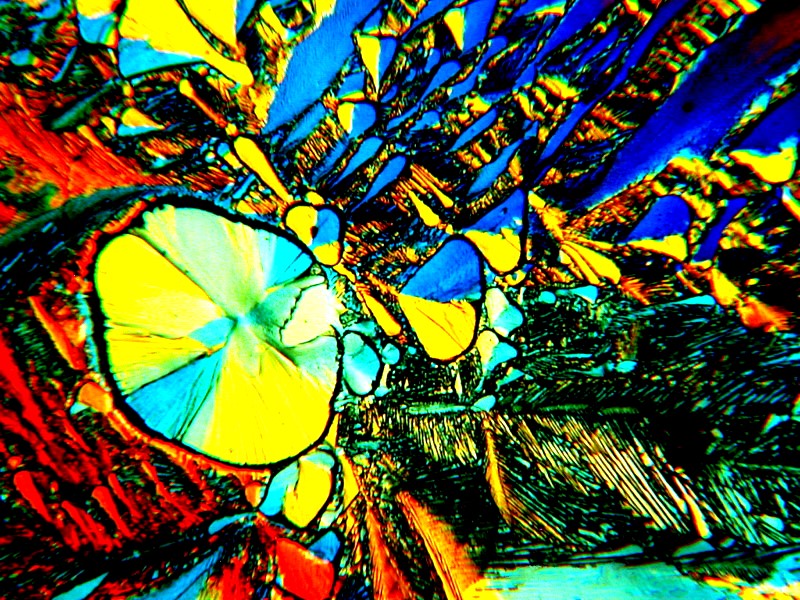
I hope you’ve had a bit of fun taking this brief tour of some images of crystals examined with polarized light and might be encouraged to try out some investigations yourself.
All comments to the author Richard Howey are welcomed.
Editor's note: Visit Richard Howey's new website at http://rhowey.googlepages.com/home where he plans to share aspects of his wide interests.
Microscopy UK Front
Page
Micscape
Magazine
Article
Library
Published in the September 2016 edition of Micscape Magazine.
Please report any Web problems or offer general comments to the Micscape Editor .
Micscape is the on-line monthly magazine of the Microscopy UK website at Microscopy-UK .
©
Onview.net Ltd, Microscopy-UK, and all contributors 1995
onwards. All rights reserved.
Main site is at
www.microscopy-uk.org.uk .